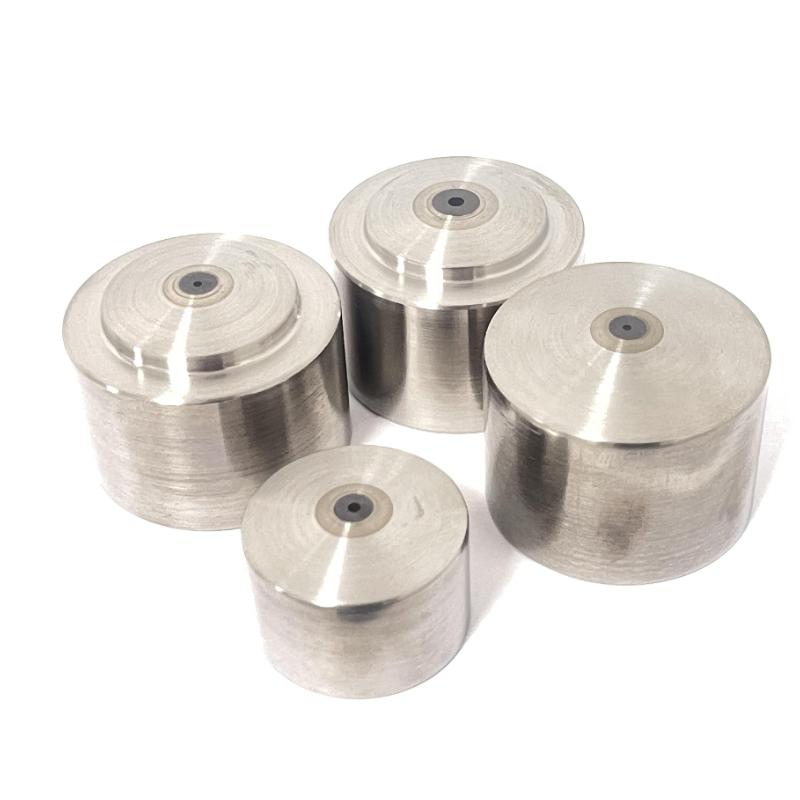SHAVING DIES
SHAVING DIES
SHAVING DIES
Tungsten carbide (TC) insert dies are widely used for shaving/peeling applications.
However, TC shaving die is not relatively lifelong, stripping the surface and high-precision control performance is good.
Polycrystalline diamond (PCD) shaving die is a better choice.
It has been shown to provide excellent surface finish and improved consistency for different wire materials.
The bearing area of the polycrystalline diamond skinning die supports the vibration of the wire material. It is much better to shaving the welding wire surface by PCD die than by a TC shaving die.

TC shaving die and PCD shaving die compared:
Tungsten steel alloy (TC) shaving die,
Advantages: cheap cost mold.
Disadvantages: Short life, poor wire consistency, surface defects, high temperature resistance.
Polycrystalline diamond (PCD) shaving die,
Advantages: long life, good consistency, high wear resistance and impact resistance.
Disadvantages: Higher unit price, longer lead time.
Application: Copper wire, aluminum wire, gold wire, titanium alloy wire, etc. need to shave the surface of the welding wire.
 English
English Español
Español Português
Português русский
русский français
français 日本語
日本語 Deutsch
Deutsch Tiếng Việt
Tiếng Việt Nederlands
Nederlands ไทย
ไทย Polski
Polski 한국어
한국어 Svenska
Svenska magyar
magyar Malay
Malay বাংলা
বাংলা Dansk
Dansk Suomi
Suomi हिन्दी
हिन्दी Pilipino
Pilipino Türk
Türk Gaeilge
Gaeilge عربى
عربى Indonesia
Indonesia norsk
norsk čeština
čeština Ελληνικά
Ελληνικά Українська
Українська नेपाली
नेपाली Burmese
Burmese български
български ລາວ
ລາວ Latine
Latine slovenský
slovenský Lietuvos
Lietuvos

Changzhou Shen Litong Mould invites you to visit the exhibition
From August 27th to 29th, 2025, at SHANGHAI NEW INTERNATIONAL EXPO CENTRE,the 12th China International Wire&Cable Industry Exhibition (Hall E1, G21), Shen Litong Dies sincerely invites you to visit, exchange and offer guidance, and jointly explore new developments in the industry.
Read MoreComparing PCD Die Blank Grain Sizes
Near-single crystal structure, virtually grain-boundary-free surface, hardness approaching natural diamond.
Read MorePCD Shaving Peeling Dies vs. TC Shaving Peeling Dies
PCD Shaving Peeling Dies: Made from polycrystalline diamond (PCD), offering ultra-high hardness, wear resistance, and thermal conductivity. Their lifespan is 10–20 times longer than TC dies, making them ideal for non-ferrous metals (e.g., aluminum, copper) and achieving high surface finish quality.
Read More